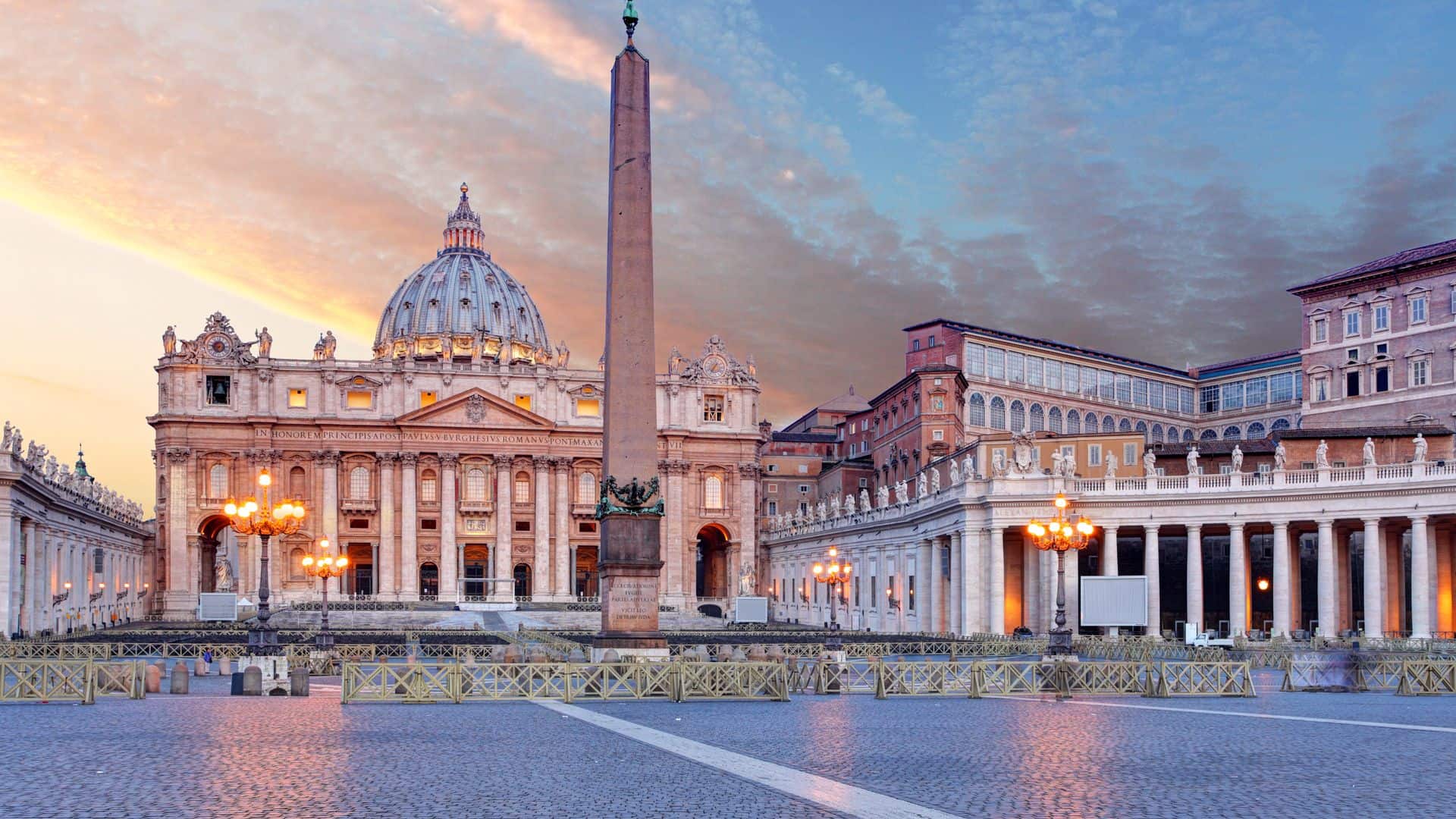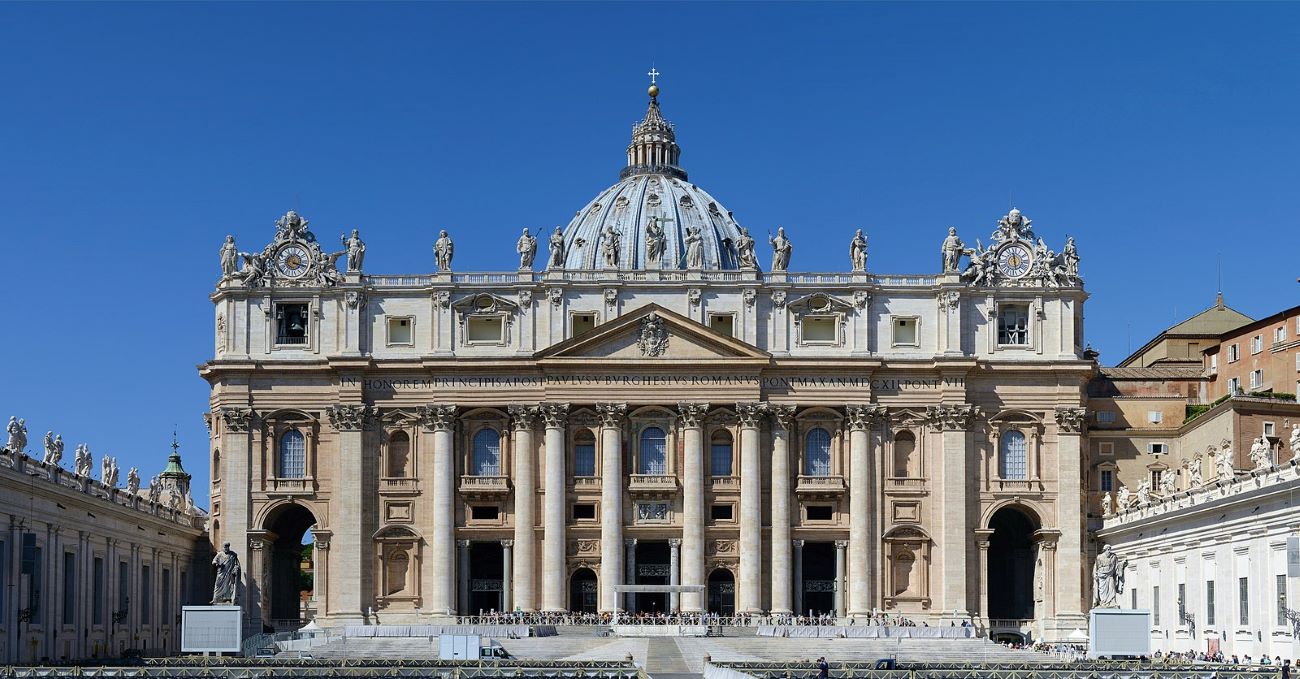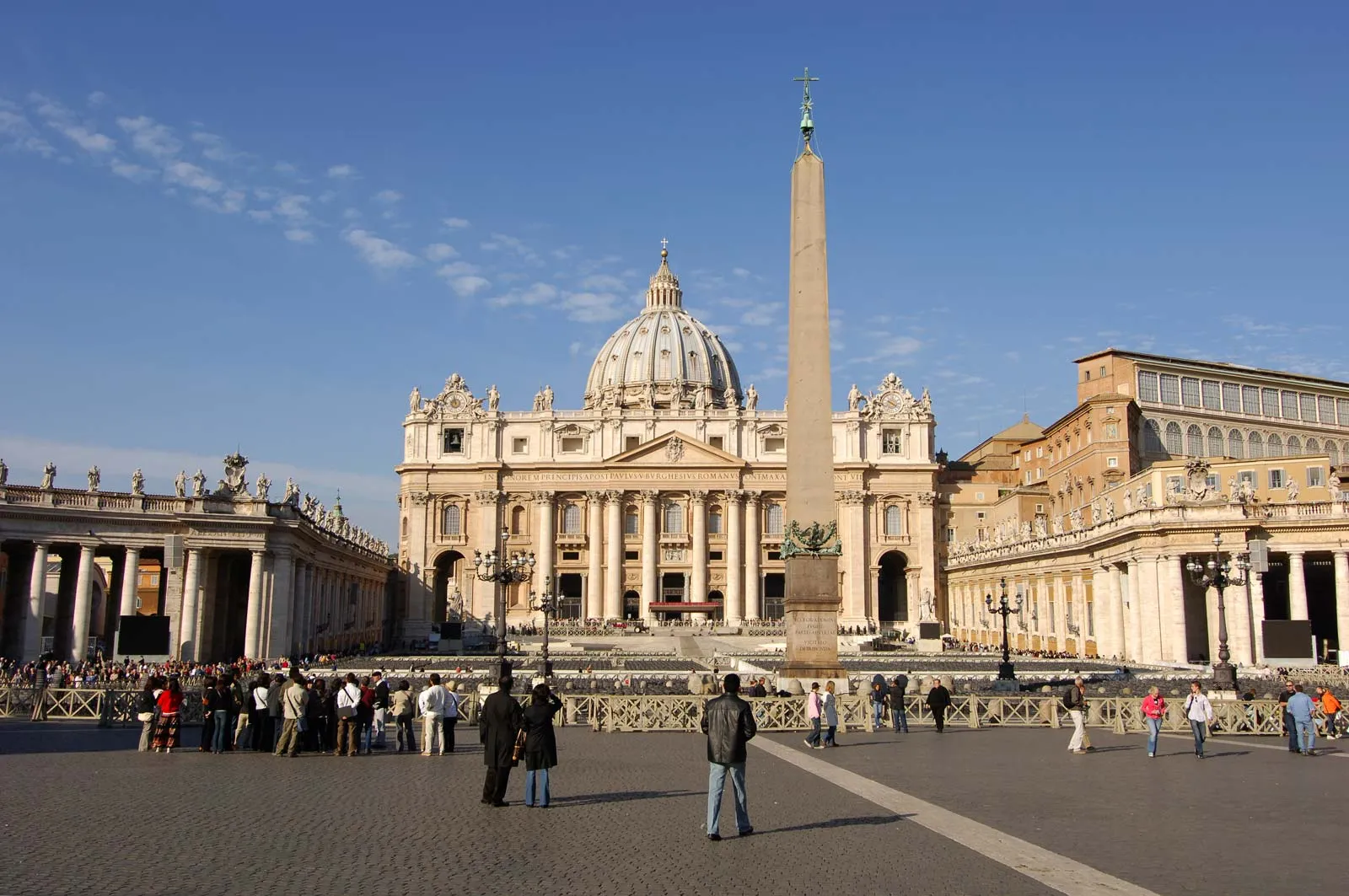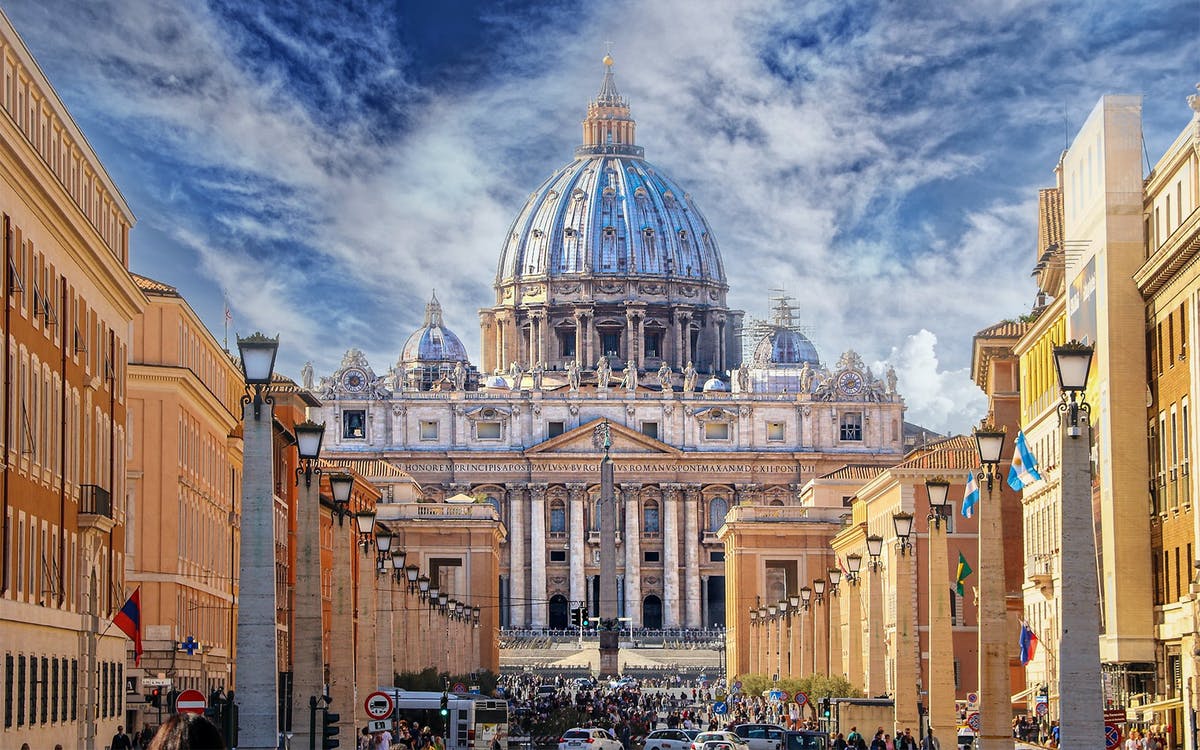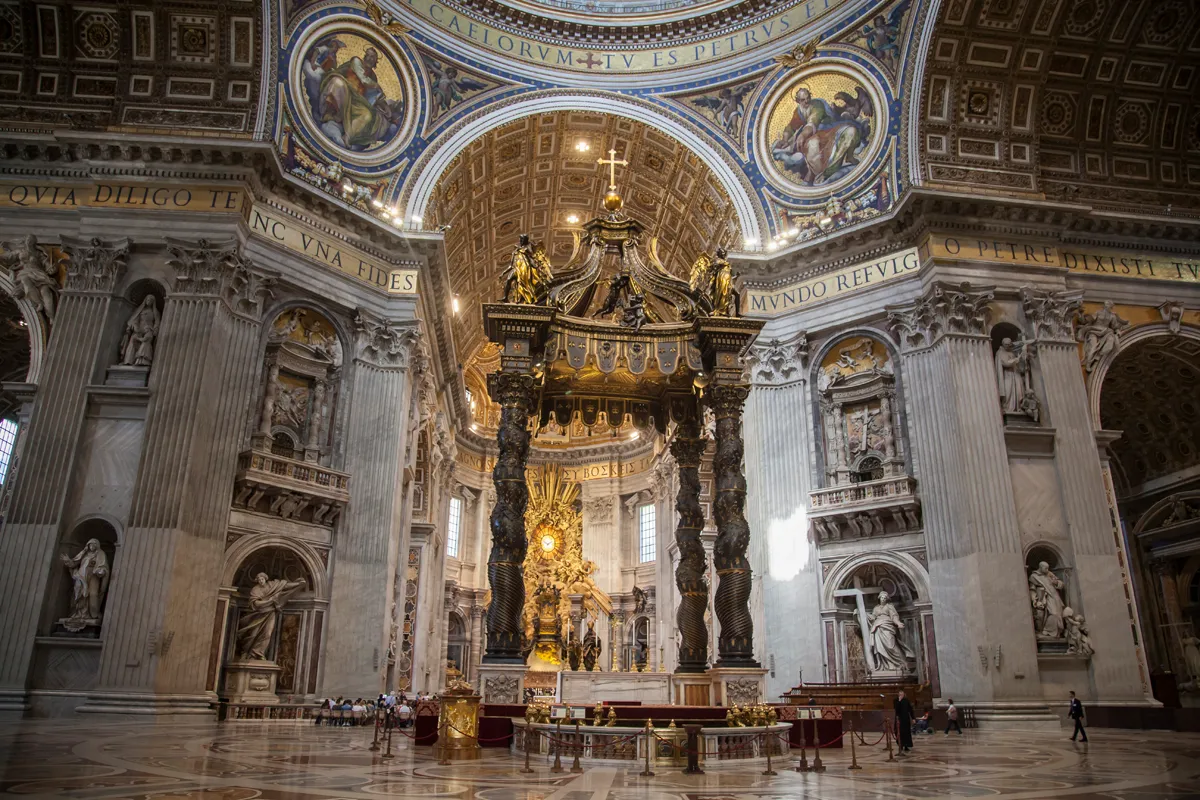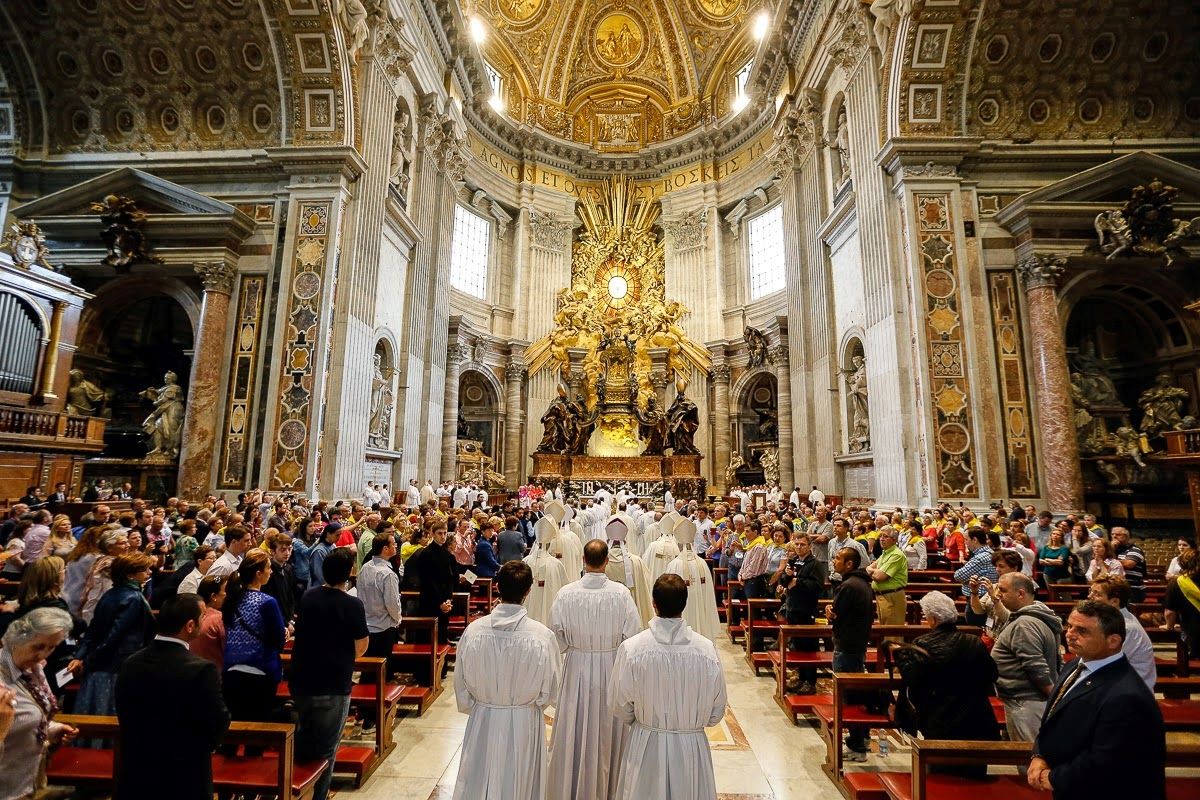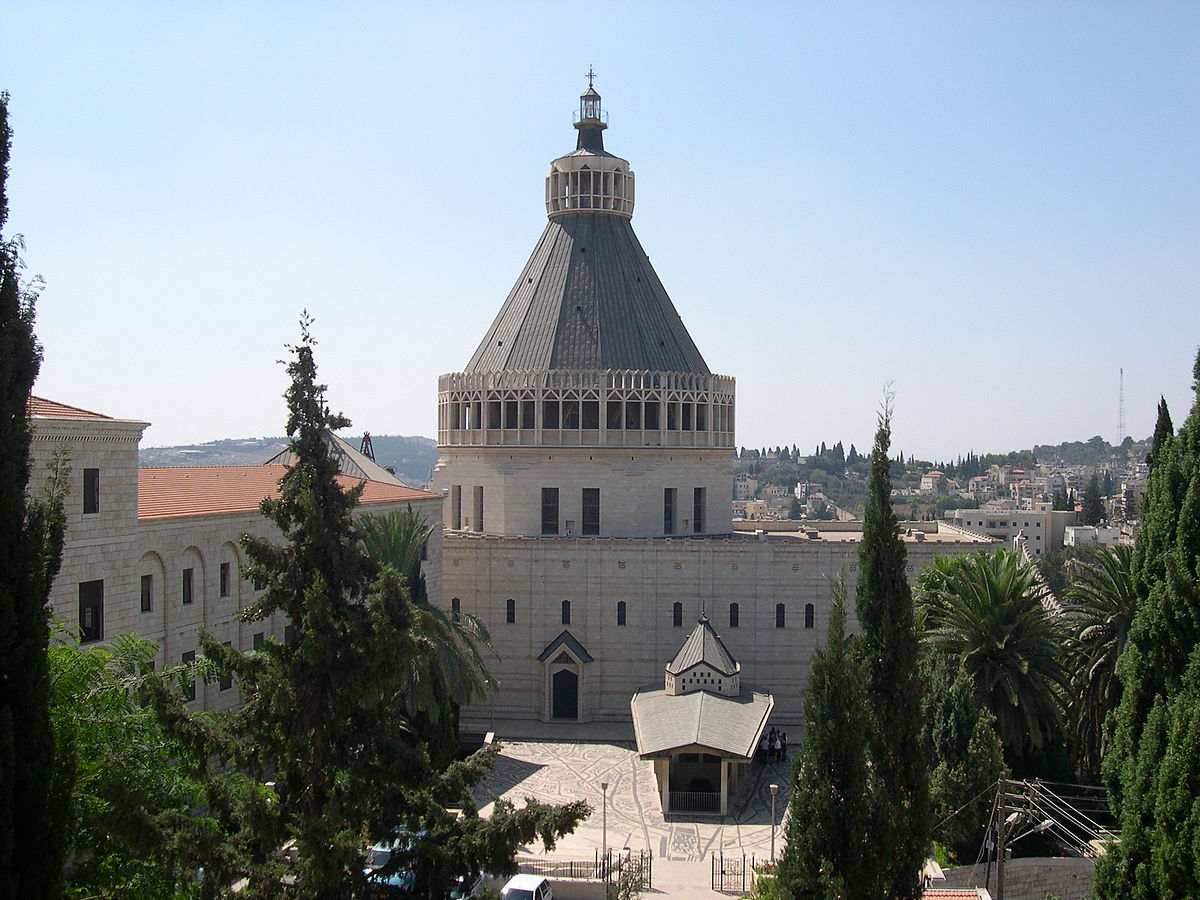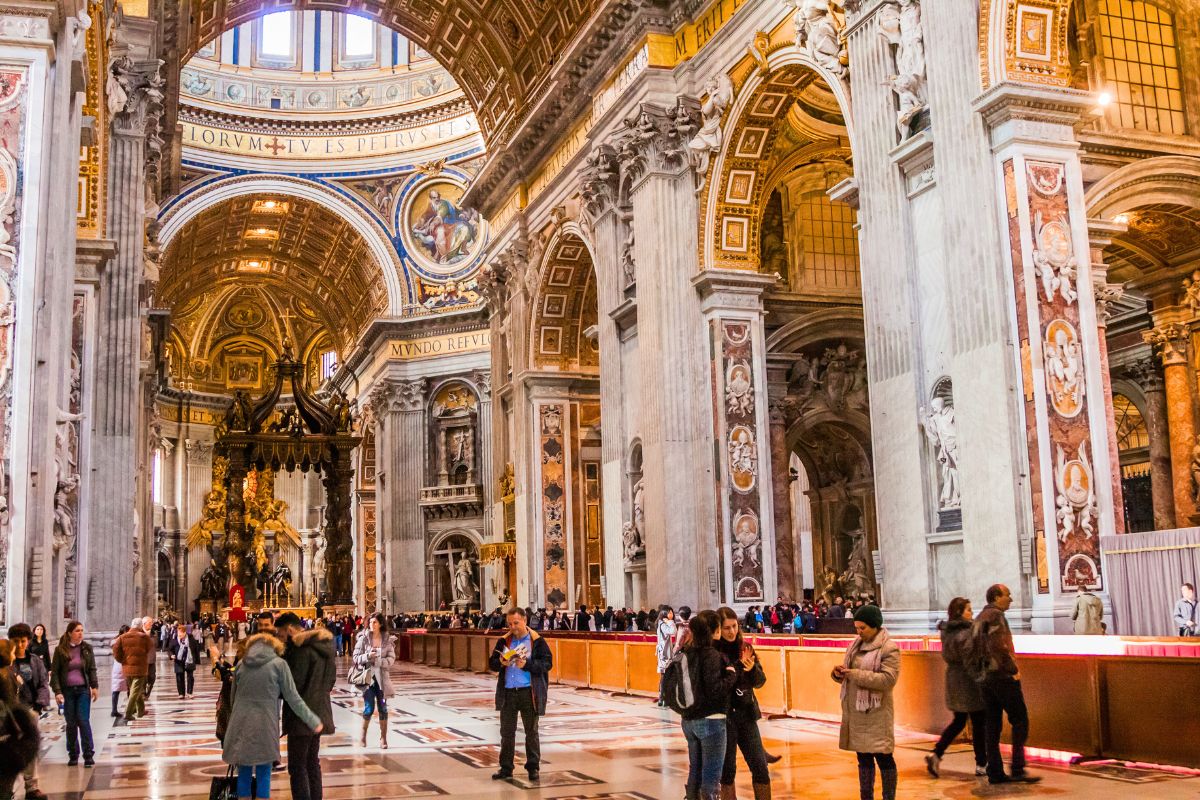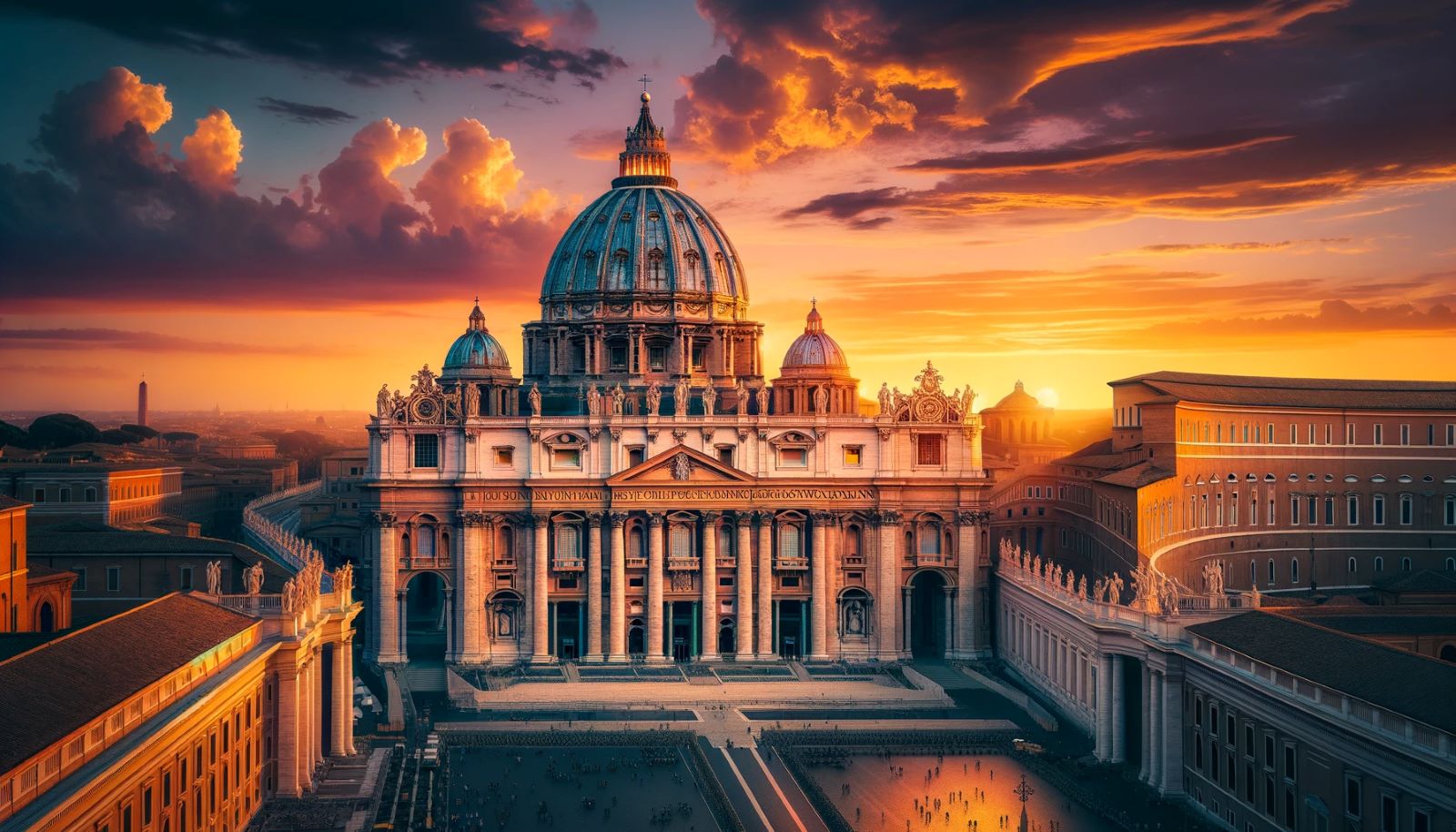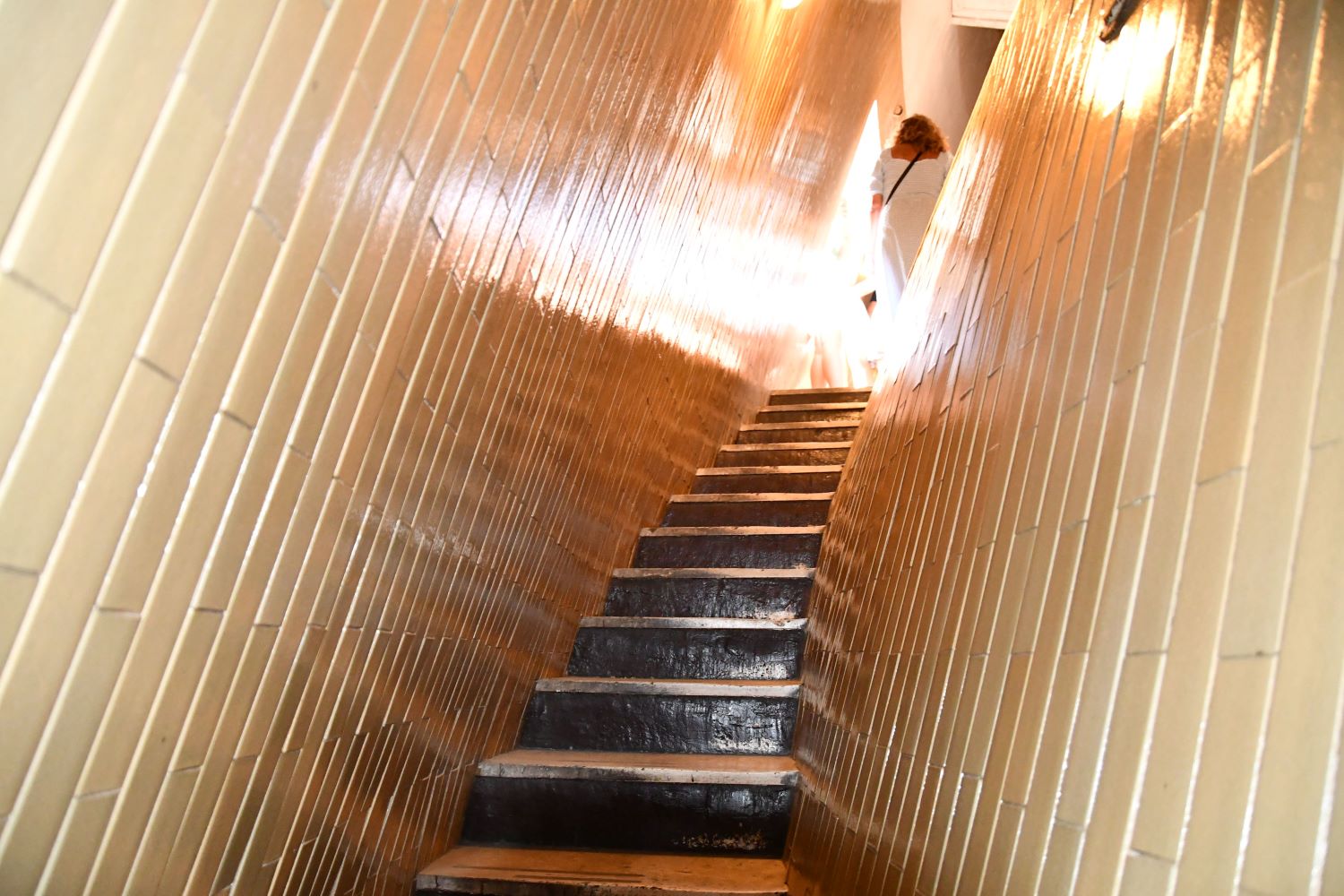Home>Arts and Culture>Where Is Saint Peter’s Basilica
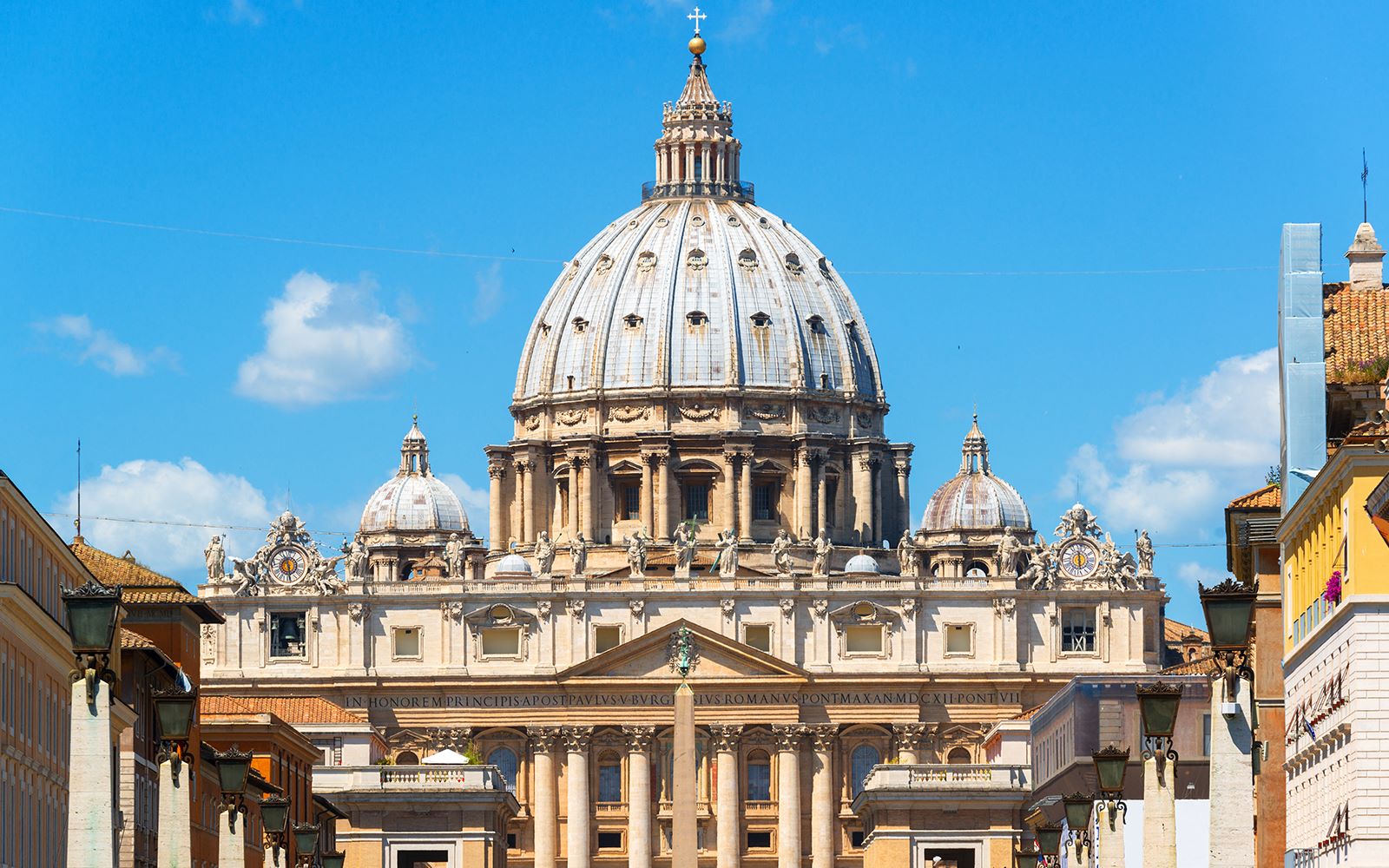

Arts and Culture
Where Is Saint Peter’s Basilica
Published: February 10, 2024
Peter Smith, Editorial Director at Christian.net, combines deep insights into faith, politics, and culture to lead content creation that resonates widely. Awarded for his contributions to religious discourse, he previously headed a major organization for religious communicators, enhancing dialogue on faith's societal impacts.
Discover the iconic Saint Peter's Basilica and its rich history in the heart of Vatican City. Explore the intersection of arts and culture at this renowned religious site.
(Many of the links in this article redirect to a specific reviewed product. Your purchase of these products through affiliate links helps to generate commission for Christian.net, at no extra cost. Learn more)
Table of Contents
Introduction
Saint Peter's Basilica, a magnificent masterpiece of Renaissance architecture, stands as a symbol of the grandeur and spiritual significance of the Catholic Church. This awe-inspiring edifice, located in Vatican City, is not only a place of worship but also a testament to the artistic and cultural legacy of humanity.
The basilica is dedicated to Saint Peter, one of the twelve apostles of Jesus and the first Bishop of Rome. Its construction was commissioned by Pope Julius II in the early 16th century and involved the contributions of renowned artists and architects such as Michelangelo, Donato Bramante, and Gian Lorenzo Bernini. The result is a structure that exudes opulence and grandeur, reflecting the power and influence of the Catholic Church during the Renaissance period.
As one approaches Saint Peter's Basilica, the sheer scale of the structure is overwhelming. The massive dome, designed by Michelangelo, dominates the skyline of Vatican City and serves as a beacon for pilgrims and tourists alike. The exterior of the basilica is adorned with intricate details, including statues of saints and biblical figures, each telling a story of faith and devotion.
Stepping inside the basilica, visitors are greeted by a breathtaking display of art and architecture. The vast interior is adorned with ornate marble, gilded altars, and magnificent frescoes, creating an atmosphere of reverence and splendor. The central nave leads to the high altar, which is situated directly above the tomb of Saint Peter, making it a focal point of pilgrimage for Catholics around the world.
Beyond its religious significance, Saint Peter's Basilica is a treasure trove of artistic masterpieces. The works of renowned artists such as Michelangelo's Pieta and Bernini's Baldacchino adorn the interior, captivating visitors with their beauty and emotional depth. Each sculpture and painting within the basilica tells a story of faith, devotion, and the enduring legacy of human creativity.
In the following sections, we will delve into the rich history of Saint Peter's Basilica, explore its location and accessibility, and uncover the remarkable sights that await those who embark on a journey to this iconic symbol of faith and artistry.
History of Saint Peter's Basilica
The history of Saint Peter's Basilica is a testament to the enduring legacy of faith, art, and human ingenuity. The origins of this iconic structure can be traced back to the 4th century when the first basilica was built over the burial site of Saint Peter, the apostle and the first Bishop of Rome. This early basilica served as a place of pilgrimage and veneration for Christians, marking the significance of Saint Peter in the establishment of the Catholic Church.
In the 16th century, Pope Julius II recognized the need for a grander and more magnificent basilica to reflect the power and influence of the Catholic Church during the Renaissance period. The commission for the new basilica attracted the talents of renowned artists and architects, including Donato Bramante, Michelangelo, and Gian Lorenzo Bernini, each leaving an indelible mark on the structure.
Bramante, the initial architect, envisioned a design that would surpass the grandeur of the ancient basilica and rival the architectural marvels of antiquity. His plan for a centralized Greek cross design laid the foundation for the basilica's iconic layout, setting the stage for the monumental undertaking that would follow.
However, it was Michelangelo who made perhaps the most enduring contribution to the basilica with his design for the dome. The massive dome, rising high above the altar, stands as a testament to Michelangelo's architectural prowess and remains one of the most recognizable features of the basilica.
Gian Lorenzo Bernini, another luminary of the Renaissance, left his mark on the basilica with the creation of the Baldacchino, a monumental bronze canopy that rises above the high altar. This awe-inspiring structure not only serves as a focal point of the basilica but also exemplifies the ornate and grandiose style of the Baroque period.
Throughout its history, Saint Peter's Basilica has undergone periods of construction, restoration, and enhancement, each phase adding to the rich tapestry of its legacy. The basilica stands not only as a place of worship but also as a living testament to the artistic and cultural achievements of humanity, drawing millions of visitors from around the world to marvel at its splendor and significance.
The history of Saint Peter's Basilica is a story of faith, vision, and the enduring pursuit of artistic excellence, a narrative that continues to unfold with each passing generation.
Location of Saint Peter's Basilica
Saint Peter's Basilica is situated within the sovereign city-state of Vatican City, an enclave within the city of Rome, Italy. The basilica's location holds immense historical, religious, and cultural significance, drawing pilgrims, tourists, and art enthusiasts from around the globe.
Nestled on the west bank of the Tiber River, Saint Peter's Basilica stands as the centerpiece of Vatican City, serving as a beacon of the Catholic faith and a testament to the enduring legacy of the Church. Its strategic position within Vatican City not only underscores its religious importance but also places it in close proximity to other renowned landmarks, including the Vatican Museums and the Sistine Chapel.
The sprawling St. Peter's Square, an iconic plaza designed by Gian Lorenzo Bernini, extends from the basilica's facade, creating a grand approach that welcomes visitors from all corners of the world. The expansive square, with its elegant colonnades and central obelisk, serves as a gathering place for religious ceremonies, papal audiences, and cultural events, further enhancing the allure of the basilica's location.
From a geographical standpoint, Saint Peter's Basilica is located in the heart of Rome, a city steeped in history and architectural marvels. Its proximity to other renowned landmarks, such as the Colosseum, the Roman Forum, and the Pantheon, makes it a focal point for visitors seeking to immerse themselves in the rich tapestry of Roman history and culture.
The basilica's location also offers stunning panoramic views of the surrounding cityscape, allowing visitors to marvel at the juxtaposition of ancient and modern Rome. The dome of Saint Peter's Basilica, designed by Michelangelo, provides a vantage point from which to behold the timeless beauty of the Eternal City, creating a truly unforgettable experience for those who ascend its heights.
In essence, the location of Saint Peter's Basilica is a convergence of history, spirituality, and artistic grandeur. It stands as a testament to the enduring influence of the Catholic Church and the profound impact of human creativity, inviting visitors to embark on a journey of discovery and contemplation within the heart of Vatican City.
How to Get to Saint Peter's Basilica
Getting to Saint Peter's Basilica is a seamless and enriching experience, offering various transportation options that cater to the diverse needs of visitors. Whether arriving from within Rome or traveling from afar, reaching this iconic landmark is a journey filled with anticipation and wonder.
By Foot
For those exploring the heart of Rome, a leisurely stroll to Saint Peter's Basilica presents an opportunity to immerse oneself in the city's captivating ambiance. Walking through the charming streets and historic neighborhoods, visitors can savor the architectural marvels and cultural treasures that line the route to the basilica. The scenic journey on foot allows for serendipitous discoveries and a deeper connection with the city's vibrant atmosphere.
Public Transportation
Rome's efficient public transportation system provides convenient access to Saint Peter's Basilica. The city's metro, bus, and tram networks offer reliable connections to key points of interest, including Vatican City. Visitors can easily reach the basilica by taking the metro to Ottaviano-S. Pietro or Cipro stations, followed by a pleasant walk through the picturesque streets leading to St. Peter's Square. Additionally, numerous bus routes serve the area, providing a flexible and cost-effective means of transportation for travelers.
Private Vehicles and Taxis
For those preferring the convenience of private transportation, taxis and car services offer a direct and comfortable way to reach Saint Peter's Basilica. Navigating the city's streets by car provides flexibility and ease of access, allowing visitors to arrive at the basilica with utmost convenience. Additionally, designated parking areas near Vatican City cater to those traveling by private vehicles, ensuring a hassle-free experience for drivers.
Guided Tours
Embarking on a guided tour to Saint Peter's Basilica not only simplifies the journey but also enriches the experience with insightful commentary and historical context. Numerous tour operators in Rome offer guided excursions to the basilica, providing visitors with a comprehensive understanding of its significance and architectural splendor. Guided tours often include skip-the-line access, allowing participants to bypass queues and make the most of their time exploring this extraordinary site.
Accessibility
Saint Peter's Basilica is committed to ensuring accessibility for all visitors, including those with mobility challenges. The basilica provides designated entrances and facilities to accommodate individuals with disabilities, ensuring that everyone can partake in the awe-inspiring experience of visiting this iconic religious and cultural landmark.
In summary, the journey to Saint Peter's Basilica is as enriching as the destination itself. Whether arriving on foot, via public transportation, or with the assistance of guided tours, visitors are greeted with a sense of anticipation and wonder as they approach this timeless symbol of faith and artistic grandeur.
Read more: Why Is St. Peter’s Basilica Important
What to See at Saint Peter's Basilica
As visitors step into the hallowed halls of Saint Peter's Basilica, they are greeted by a breathtaking array of artistic and architectural wonders that have captivated pilgrims and art enthusiasts for centuries. Each facet of the basilica's interior tells a story of faith, creativity, and the enduring legacy of human ingenuity. Here are some of the remarkable sights that await those who embark on a journey to this iconic symbol of faith and artistry:
Michelangelo's Pieta
One of the most revered masterpieces within the basilica is Michelangelo's Pieta, a stunning sculpture that depicts the body of Jesus cradled in the arms of the Virgin Mary. Crafted from a single block of Carrara marble, this exquisite work of art exemplifies Michelangelo's unparalleled skill in capturing human emotion and grace. The Pieta stands as a testament to the enduring power of faith and the profound beauty that can be wrought from stone.
Bernini's Baldacchino
Rising majestically above the high altar is Bernini's Baldacchino, a monumental bronze canopy that serves as a visual centerpiece of the basilica. Adorned with intricate details and ornate embellishments, the Baldacchino exemplifies the grandeur and opulence of the Baroque period. Its towering presence commands the attention of all who enter, serving as a testament to the artistic prowess of Gian Lorenzo Bernini.
The Dome
Ascending to the top of the basilica's dome offers a breathtaking vantage point from which to behold the grandeur of Vatican City and the surrounding Roman landscape. Designed by Michelangelo, the dome's interior features a mesmerizing display of mosaics that depict the heavenly realms, creating an ethereal ambiance that inspires awe and contemplation. The ascent to the dome is a journey through history and art, culminating in a panoramic vista that leaves an indelible impression on all who gaze upon it.
Read more: Who Designed St. Peter’s Basilica
The Papal Altar and Confession
The central nave of the basilica leads to the Papal Altar, situated directly above the tomb of Saint Peter. This sacred space serves as a focal point for religious ceremonies and pilgrimages, drawing the faithful to pay homage to the apostle and experience a profound sense of spiritual reverence. Adjacent to the altar is the Confession, a sunken area that houses the revered tomb of Saint Peter, inviting visitors to reflect on the enduring legacy of the Church and the foundational role of Saint Peter in its history.
The Nave and Chapels
The expansive nave of Saint Peter's Basilica is adorned with a rich tapestry of chapels, each offering a unique glimpse into the artistic and spiritual heritage of the Catholic Church. From the Chapel of the Pieta to the Chapel of the Blessed Sacrament, these sacred spaces are adorned with intricate marble, gilded altars, and revered relics, creating an atmosphere of reverence and contemplation.
In essence, the sights within Saint Peter's Basilica are a testament to the enduring power of faith and the boundless creativity of humanity. Each masterpiece and architectural marvel invites visitors to embark on a journey of discovery and contemplation, forging a profound connection with the timeless legacy of this iconic symbol of faith and artistry.
Conclusion
In conclusion, Saint Peter's Basilica stands as a testament to the enduring legacy of faith, art, and human ingenuity. From its rich history as a place of pilgrimage to its awe-inspiring architectural and artistic wonders, the basilica embodies the profound impact of the Catholic Church and the enduring influence of the Renaissance period. As visitors traverse its hallowed halls and gaze upon its masterful creations, they are transported through time, bearing witness to the convergence of spirituality, creativity, and cultural significance.
The journey to Saint Peter's Basilica is not merely a physical passage but a profound experience that transcends the boundaries of time and space. It is a journey of discovery, inviting visitors to immerse themselves in the splendor of Renaissance art, the grandeur of Baroque architecture, and the enduring devotion of countless pilgrims who have sought solace and inspiration within its sacred confines.
Moreover, the basilica's location within Vatican City, nestled amidst the timeless allure of Rome, adds another layer of significance to its narrative. It serves as a bridge between the ancient and the modern, a beacon of faith and artistic grandeur that continues to captivate the hearts and minds of all who behold its magnificence.
As visitors depart from Saint Peter's Basilica, they carry with them not only memories of its breathtaking sights but also a profound sense of connection to a legacy that spans centuries. The basilica's enduring presence serves as a reminder of the enduring power of human creativity, the resilience of faith, and the timeless allure of artistic expression.
In essence, Saint Peter's Basilica is more than a monumental structure; it is a living testament to the enduring pursuit of beauty, spirituality, and cultural significance. It stands as a beacon of hope, a repository of history, and a testament to the boundless potential of human creativity. Whether one approaches its gates as a pilgrim, an art enthusiast, or a curious traveler, the basilica offers an experience that transcends the ordinary, leaving an indelible mark on the hearts and minds of all who are fortunate enough to behold its splendor.
